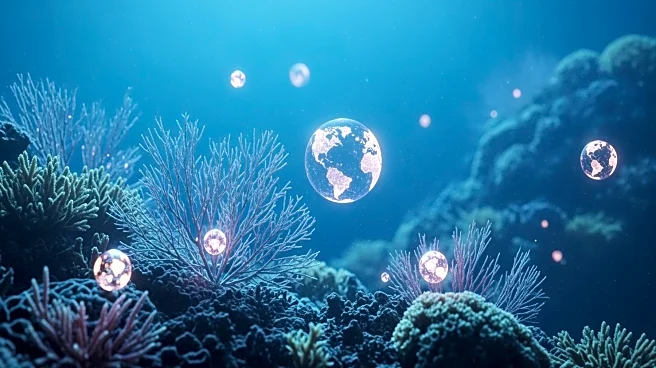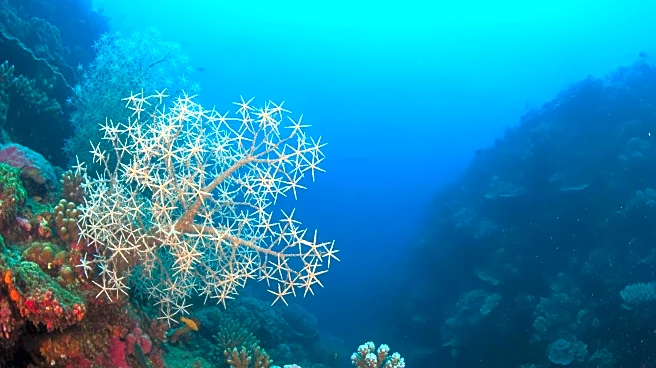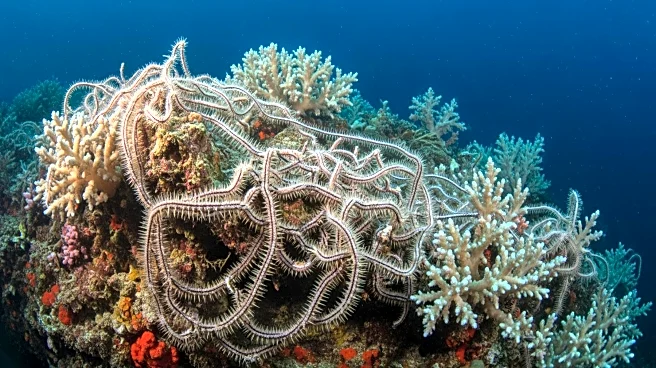What's Happening?
A world-first study led by Museums Victoria Research Institute has mapped the global distribution and evolutionary relationships of brittle stars, revealing unexpected global connectivity among deep-sea
marine life. Published in Nature, the study utilized DNA from 2,699 specimens housed in 48 natural history museums worldwide. The research uncovered how these ancient, spiny animals have migrated across oceans over millions of years, linking ecosystems from Iceland to Tasmania. Brittle stars, which have lived on Earth for over 480 million years, are found on all ocean floors, including depths of more than 3,500 meters. Their larvae can survive for extended periods in cold water, drifting on slow-moving deep-sea currents, enabling them to colonize distant regions.
Why It's Important?
The study transforms the understanding of deep-sea evolution and highlights the importance of museum collections in scientific research. The findings have significant implications for marine conservation, as they reveal the deep-sea's role as a 'connected superhighway.' This connectivity must be considered in environmental planning and policy-making, especially as threats from deep-sea mining and climate change increase. The research underscores the need for global collaboration to protect marine biodiversity, emphasizing the deep-sea's fragility despite its interconnectedness.
What's Next?
The study suggests that future conservation efforts should incorporate the understanding of deep-sea connectivity to effectively safeguard marine biodiversity. As environmental threats grow, there is a need for global collaboration to protect these ecosystems. The research may prompt further studies into the evolutionary history and migration patterns of other deep-sea species, potentially leading to new insights into oceanic biodiversity.
Beyond the Headlines
The study highlights a paradox in the deep-sea environment: it is highly connected yet incredibly fragile. This duality poses challenges for conservation efforts, as the interconnectedness of species makes them vulnerable to widespread impacts from environmental changes. The research calls for a nuanced approach to deep-sea conservation, balancing the protection of biodiversity with the sustainable use of ocean resources.











